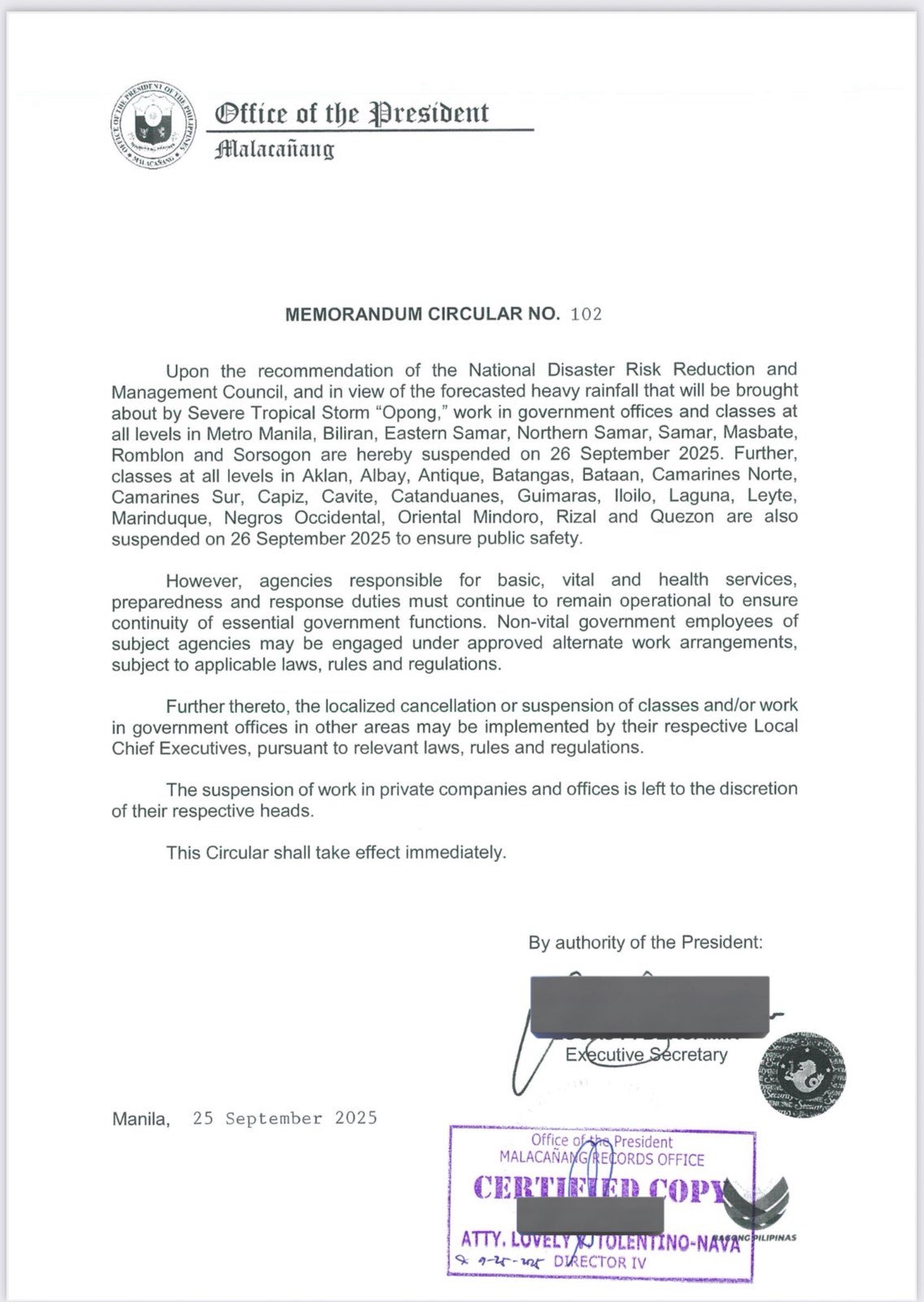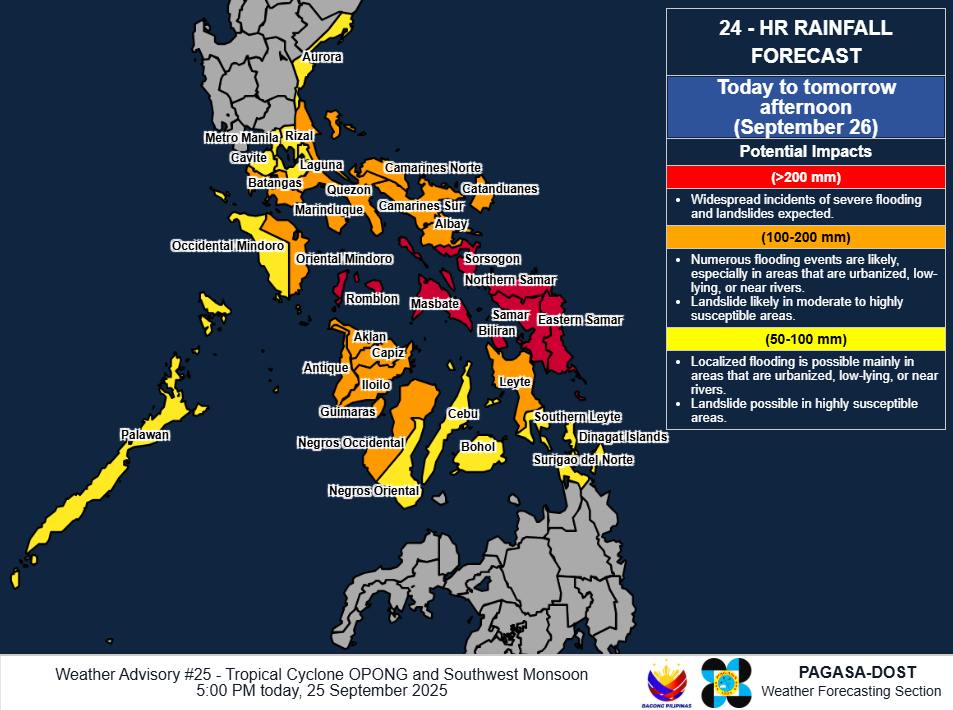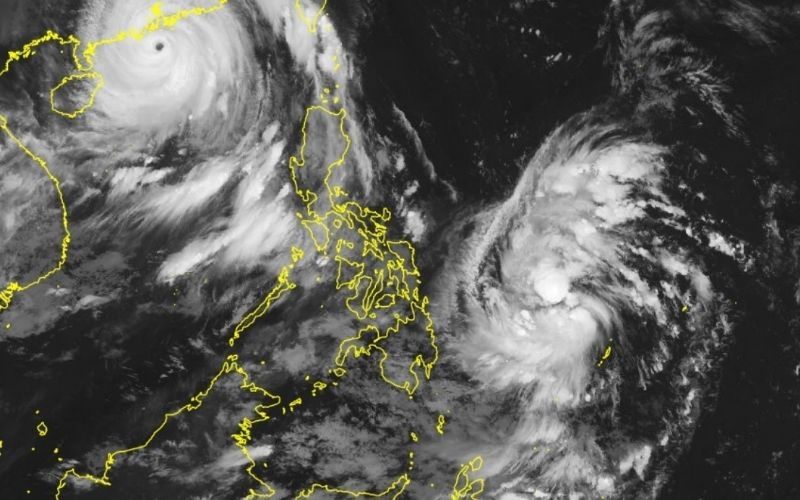The Philippines is bracing for more days of heavy rains as Typhoon Opong, intensified by the Southwest Monsoon (Habagat), continues to drench vast areas of Luzon and Visayas. The Philippine Atmospheric, Geophysical and Astronomical Services Administration (PAGASA) has warned of severe flooding and landslides, with rainfall expected to reach up to 200 millimeters or more in several provinces.
In its latest advisory, PAGASA said the storm system, though not projected to make landfall, is powerful enough to enhance the habagat, bringing widespread downpours across the country until at least Saturday, September 27. Provinces in Eastern Visayas, including Northern Samar, Samar, Eastern Samar, Biliran, and Leyte, are forecast to receive the heaviest rainfall, with Occidental Mindoro in Southern Luzon also under the highest alert. Other areas such as Masbate, Romblon, Oriental Mindoro, Batangas, Laguna, Quezon, Camarines Sur, Albay, Sorsogon, and several provinces in Western Visayas could see between 100 to 200 millimeters of rain, enough to trigger flooding in low-lying areas and landslides in mountainous terrain. Even Metro Manila, Cavite, Rizal, Pampanga, Bulacan, Aurora, Isabela, Palawan, Bohol, Cebu, Dinagat Islands, and Surigao del Norte, expected to receive lighter rainfall of 50 to 100 millimeters, remain at risk of localized floods and landslides.

As a precautionary measure, Malacañang has ordered the suspension of work in government offices and classes at all levels in Metro Manila and at least 26 other provinces, following the recommendation of the National Disaster Risk Reduction and Management Council (NDRRMC). The suspension, formalized under Memorandum Circular No. 97, was issued to ensure public safety amid the threat of continuous heavy rains. Essential government services, particularly those related to health and emergency response, are expected to remain operational, while private companies have been given the discretion to suspend work depending on conditions in their areas.

Local governments in high-risk communities have begun evacuations in flood-prone villages and coastal barangays, while fisherfolk have been barred from sailing due to rough seas along western seaboards. Emergency teams are also on heightened alert as NDRRMC monitors major river systems and dam levels across Luzon and Visayas to guard against possible overspills.

Although Typhoon Opong is not on track to directly hit the Philippines, PAGASA warned that its wide circulation will continue to amplify the habagat, worsening rains in already saturated areas, particularly in Central Luzon and Metro Manila. Authorities have urged residents to remain vigilant, follow local advisories, and prepare for possible evacuations. “Even if Opong does not make landfall, the rainfall it brings poses serious threats. People should not let their guard down,” PAGASA said.
With widespread rains expected through the weekend, the government is emphasizing preparedness and early action to reduce the risk of casualties and damage, reminding the public that vigilance remains their strongest protection against natural disasters.







